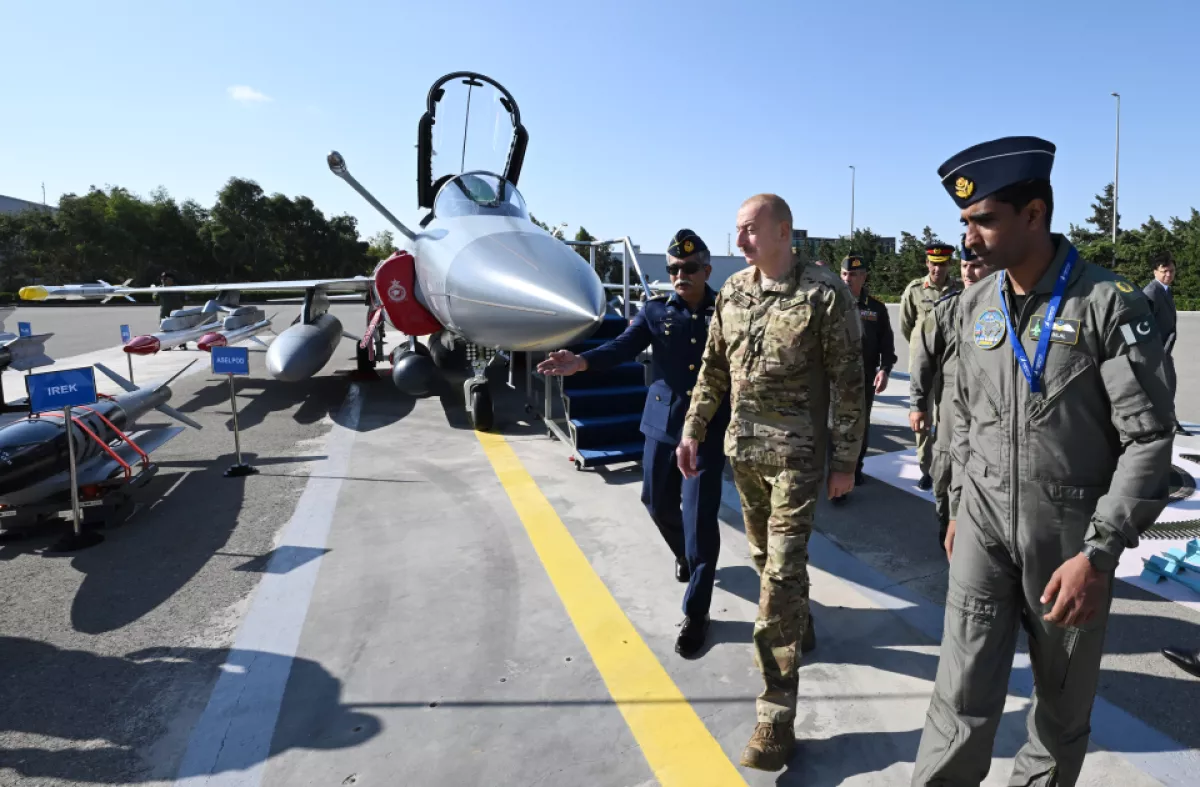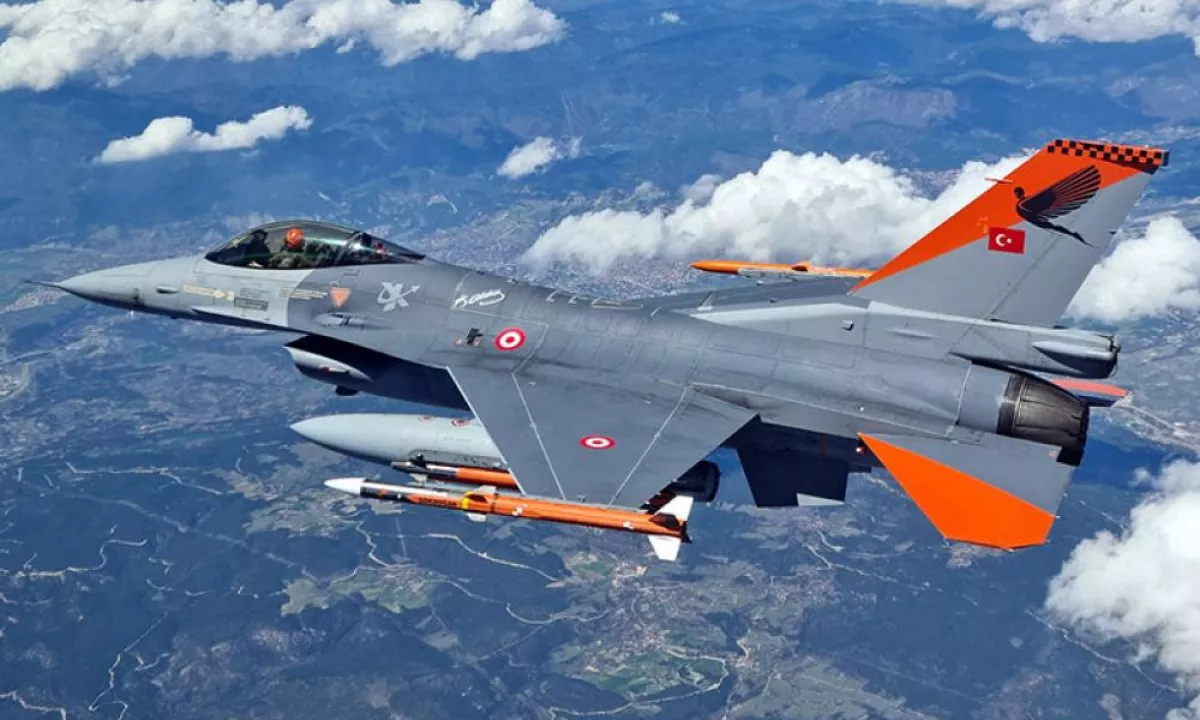JF-17 Block III fighter jets: A game-changer for Azerbaijan’s Air Force
The official website of the President of the Republic of Azerbaijan announced that the Pakistan Aeronautical Complex (PAC) JF-17C Block-III was “integrated into the arsenal of Azerbaijan’s Air Force,” on 25 September 2024. Azerbaijan is currently the fourth foreign country to purchase this aircraft after Myanmar, Nigeria and Iraq.
While it was thought that Armenia's powerful diaspora would create various difficulties in the supply and maintenance of a Western-origin aircraft, Baku made a big move on the chessboard and added the J-F17, produced in cooperation between China and Pakistan, to its inventory.
What makes the JF-17 fighter jet different from others?
The PAC JF-17 Thunder or CAC FC-1 Xiaolong is a multirole combat aircraft jointly developed by China's Chengdu Aircraft Corporation (CAC) and Pakistan Aeronautical Complex (PAC). It is designed to replace older aircraft in the Pakistan Air Force (PAF) and is capable of performing a variety of roles including interception, ground attack, anti-ship and air reconnaissance.

Azerbaijani President Ilham Aliyev inspects the JF-17 Block III fighter jet
According to former Chief of Air Staff of the Pakistan Air Force Mujahid Anwar Khan, the F-17 Thunder proved itself as a battle-tested aircraft during the successful execution of Operation Swift Retort, when it defended Pakistan's territorial sovereignty against an Indian Air Force (IAF) intrusion on February 27, 2019. The Block 3 variant of the F-17 Thunder enhances its capabilities with a range of advanced features. These include an active electronically scanned array (AESA) radar, a helmet-mounted display (HMD), an upgraded flight management system, and an internal infrared search and tracking (IRST) system. It is powered by a more powerful Russian Klimov RD-93MA engine and equipped with a larger, advanced wide-angle head-up display (HUD). Additionally, the Block 3 variant comes with improved electronic countermeasures and an additional weapon station, increasing its weapon-carrying capacity.
Advanced active electronically scanned array (AESA) radars allow them to emit waves over a wider frequency range compared to Passive Electronically Scanned Arrays (PESA), making them harder to detect over background noise. This allows ships and aircraft to remain more stealthy even if they emit strong radar signals. This is one of the main reasons for Azerbaijan’s purchase of the JF-17.
The Azerbaijani Air Force has allocated significant resources for modernization. The SU-25 Lachin modernization service (at the same time, with this modernization, Türkiye has integrated national ammunition that meets NATO standards into a Soviet-origin aircraft) and Bayraktar AKINCI TİHA procurement from Türkiye was also a reflection of this. By strengthening its air fleet, Baku is preparing to gain an advantage in the South Caucasus. The increase in the army budget, which was $2.4 billion in 2009, to $10 billion today, is drawing the attention of regional countries. While $12 billion was allocated from the state budget in 2008-2012 alone for the increase of the country's defence power and the material and technical renewal of the armed forces, the Azerbaijani Air Force in particular attracts attention as a regional power with its innovations. Although peace talks with Armenia are ongoing, the purchase is aimed at enhancing combat capabilities and readiness in response to the continuing tensions with Armenia, stemming from its illegal territorial claims against Azerbaijan. This situation has created an urgent need for increased defence preparedness.
Turkish ammunitions and JF-17
The use of Turkish systems in Block III, like the Turkish systems used in Block II, is among the current agenda items, although there is no official statement. Russia, historically Azerbaijan’s largest arms supplier, is increasingly being replaced by other countries in this equation, as the Ukraine war has shown how critical it is to remain dependent on Russian ammunition.
Moreover, Azerbaijan cooperates with Türkiye in the field of defence industry, and the relations between the two brotherly countries have progressed much more at this point, especially during the Second Karabakh War. However, after this tremendous victory, Azerbaijan defends the idea of not being dependent on just one country in developing its ammunition in the defence industry and for this reason, it is signing new agreements with other countries such as Pakistan and Israel.

Turkish F-16C fighter jets equipped with GOKDOGAN” and BOZDOGAN missiles
The previous versions of the JF-17 fighter jet already use the ASELSAN-designed ASELPOD targeting pod. The integration of the Gökdoğan and Bozdoğan air-to-air missiles is on the agenda. Ammunition and subsystems such as ASELPOD supplied from Türkiye were used by Pakistan and Nigeria in JF-17. This is also expected to be the case for Azerbaijan in the near future. Furthermore, the HAKİM Air Command and Control System Project is one of the most critical joint projects of the Azerbaijani and Turkish Air Forces. With this project, the air forces of both countries not only control Azerbaijani airspace, but also have the opportunity to conduct joint operations.
This purchase is also expected to significantly strengthen the relations between Türkiye and Pakistan, as well as between Pakistan and Azerbaijan. As is well known, Pakistan has maintained strong ties with Azerbaijan, being the second country after Türkiye to recognize Azerbaijan's independence in 1991. Pakistan has been a steadfast supporter of Azerbaijan, particularly in its conflict with Armenia over the Karabakh region. Relations between Armenia and Pakistan soured at the end of 2016 when Armenia vetoed Pakistan's application for observer status in the Parliamentary Assembly of the Collective Security Treaty Organization.
The integration of Turkish ammunition into the JF17 also creates great potential for the Pakistani economy, which has supported its aircraft with ammunition at NATO standards. And it increases the attractiveness of the JF17s. The JF-17 Thunder fighter jet, with a Russian engine, Chinese fuselage and Western-made avionics, seems to serve to start a new process in the relations between the three countries.








